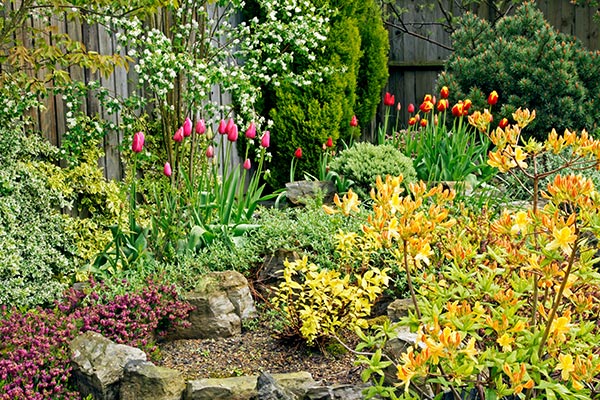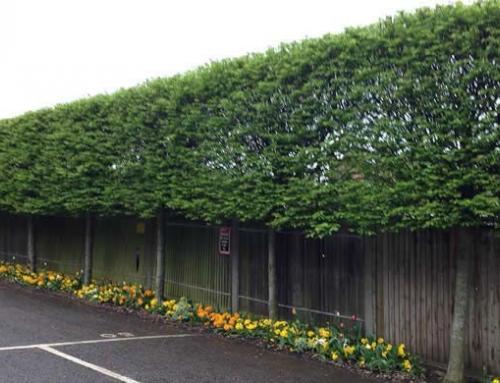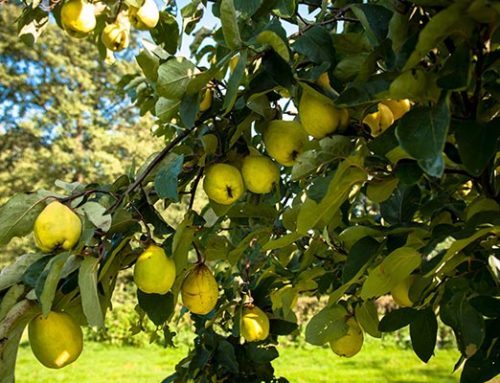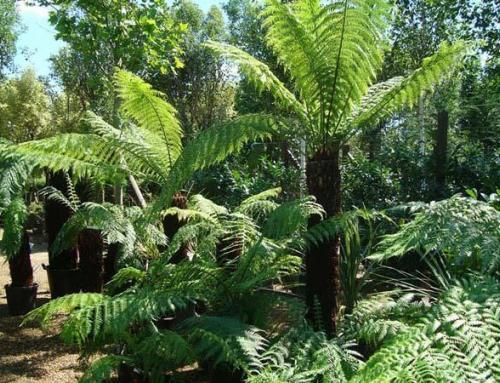REMEMBER THESE IMPORTANT PLANTING TIPS – REGULARLY FEED, WEED, PRUNE AND WATER YOUR PLANTS .
With plants you need to be consistent – pick a day each week when you inspect your plants, weed the beds, feed the plants and water them (normally when you mow your lawn each week). Putting in a few hours each month during the growing period (April to September) will go a long way to ensuring the plants survive and prosper in your garden.
BE REALISTIC – If you do not think you are able to put in the commitment then hire a gardener to do this for you.

Guide To Planting and Care –
- Digging The Hole
If you decide to plant new plants yourself, you should think about how the planting is carried out properly. As a rule of thumb, try to always dig a hole that is about a third larger than the container the plant arrived in. Once you have dug the hole, pile up this dug out soil to the side of the hole and mix with an equal amount of good quality organic matter. We prefer to use a good quality compost which if you mix it 50/50 with the soil dug out, will give the plant the best preparation for long term healthy growth. Generally, we recommend that you add, depending on the size of the hole, a handful or more of ‘blood fish and bone’ (slow acting organic fertiliser, readily available in DIY/garden centres) to the bottom of the hole.
- Planting
When planting, ensure plant roots are thoroughly wet and that the rootball is level with the existing soil level. Backfill the hole with the mixed soil (as above) making sure you have heeled in the soil to avoid any pockets of air and to give the plant stability in case there is heavy wind. If you have just planted a tree you might want to stake it – do this before the planting. Depending on the tree, you have a choice of methods to stake it. We suggest a wooden stake driven into the ground at a 45 degree angle about 40/50 cm from the base of the tree. Then tie the tree to the stake with a good quality rubber tree tie (this will ‘give’ as the tree moves with the wind). When planting in the lawn area make sure that the grass does not grow right up to the trunk/base of the plant. It is recommended to cut away the grass and create a circle around the base of the plant and then mulch this circular bed.
- Mulching
After planting it is recommended to mulch the beds – we use Mulch or Mix (Mulch is a mixture of composted bark, leaf mould, manure and fenland soil) which will increase the moisture levels in the soil and prevent the soil above the plant from drying out in windy/dry conditions. Mulching thoroughly over the beds once a year will also assist with keeping weeds suppressed. The goodness from this mulch will be dragged down into the soil by worms and this will enrich the entire bed. Read in more detail about Mulching here >>
- Watering
Watering seems a simple job but it is something that is not always effectively carried out in the garden. The water needs to reach the roots of the plant, so just after planting soak the plant in the ground – if the water sits around the base of the plant you may need to gently use the garden fork to create a few holes at the top of the planting area which will allow the water to seep through to the roots easier. The first watering may require you to go back and water again over the planting area with the hose a couple of times to ensure sufficient water is getting to the roots particularly in dry and windy conditions. Then watering once a week is normally sufficient. Check the plants regularly during the growing months, particularly from April (when the weather warms up) to September (when the weather gets colder and the plants go dormant). The first 18 months of planting are crucial to the establishment of the root system. If you are concerned that you are not going to have time to water regularly, or you are away a lot, consider installing a simple automatic watering/irrigation system.
- Feeding
Feeding with a liquid or granular feed during the growing months (April-Sept) is recommended at least four times a year. Plants which prefer an acidic soil such as azaleas, magnolias, camellias and rhododendrons need a regular ericaceous feed to encourage their flowers and to keep their leaves green.
Planting Tips For Plants in Pots
Plants in pots are higher maintenance and will need regular watering depending on the prevailing weather conditions. They must also be fed as above at least 4 times a year – more if possible. If the plants in pots are showing signs of suffering ie drooping leaves / yellowing leaves / leaves dropping off then they may need repotting into a larger pot. Bamboo particularly in pots needs lots and lots of water (but must be well-draining not sitting around the roots).
Checking the Plant and the Soil
Any changes to a plant should be noted – eg yellowing of the leaves can mean too much watering or too little. Over-watering can cause the roots to rot and not allowing oxygen to the root system can suffocate the roots. If you have concerns about a plant it is very important to check the soil below the plant – it is not only the top of the soil but about 20-30cm (8-12 inches) below the surface. Form a ball of this soil in your hand – the soil should compact and be fairly moist. If it is slimy (overwatered) if it crumbles away (insufficient water). Bear in mind that some yellowing of leaves may occur when lots of new foliage is coming through in early spring eg Evergreen Magnolias – Magnolia Grandiflora and Photinia Red Robin lose a lot of leaves, which change colour and drop off when the weather warms up significantly in late spring/early summer just before putting on new foliage. Browning on the tips of bamboo leaves is fairly common in hot weather conditions or very windy conditions. These leaves on the bamboo can be removed or wait until the new shoots appear in late Spring and give a good liquid feed when watering.
Planting Tips For Bamboo – they need lots of water (see our blog on Bamboo Plants).
Generally plants which are healthy ie fed and watered regularly will not be attacked by garden pests or disease. Once a plant starts to deteriorate it will be more vulnerable to garden insects or disease such as airborne fungus like black spot. The best option is to give a good liquid feed just as the new leaves are coming through and then dispose of the old leaves which are diseased or covered in pests (DO NOT put these on your compost heap). Large Garden Centres and DIY stores have many treatments for garden pests if necessary.




